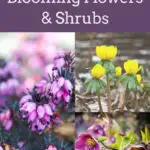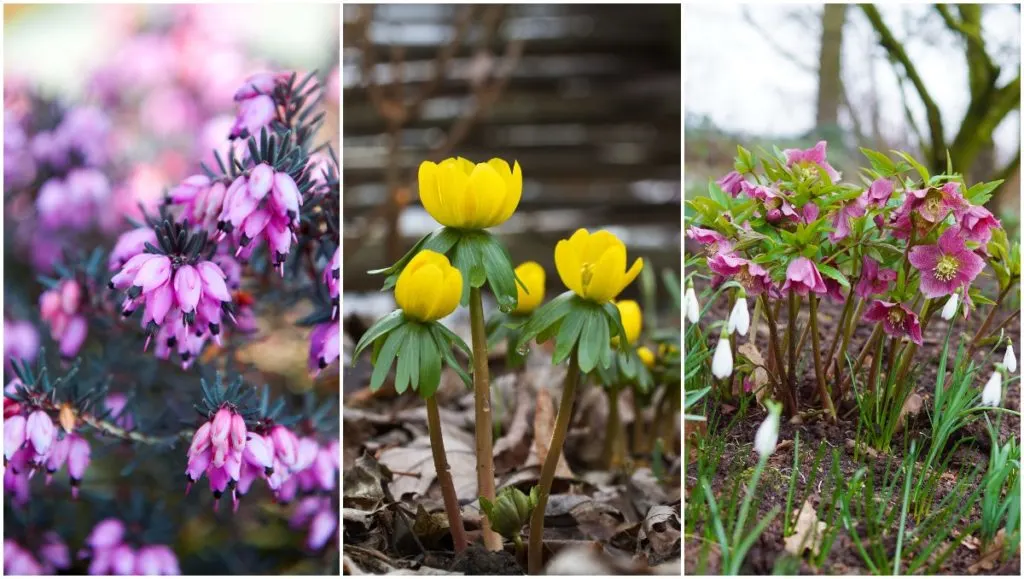
Gardens of the north enter a state of deep slumber from December to March.
Covered by a blanket of snow, winter temperatures are often too cold and daylight hours too short for most plants to survive – let alone grow.
Even more southerly regions can become drab, dull, and mostly brown.
There are, however, flowers and shrubs that absolutely thrive under wintry conditions. These cultivars are incredibly hardy early bloomers that have no trouble poking their heads up through a layer of snow.
If you are already counting down the days to spring, take this time to plan out a wonderful winter garden, replete with vibrant color, interesting shapes, and lovely textures.
1. Winter Heath (Erica carnea ‘Springwood Pink’)
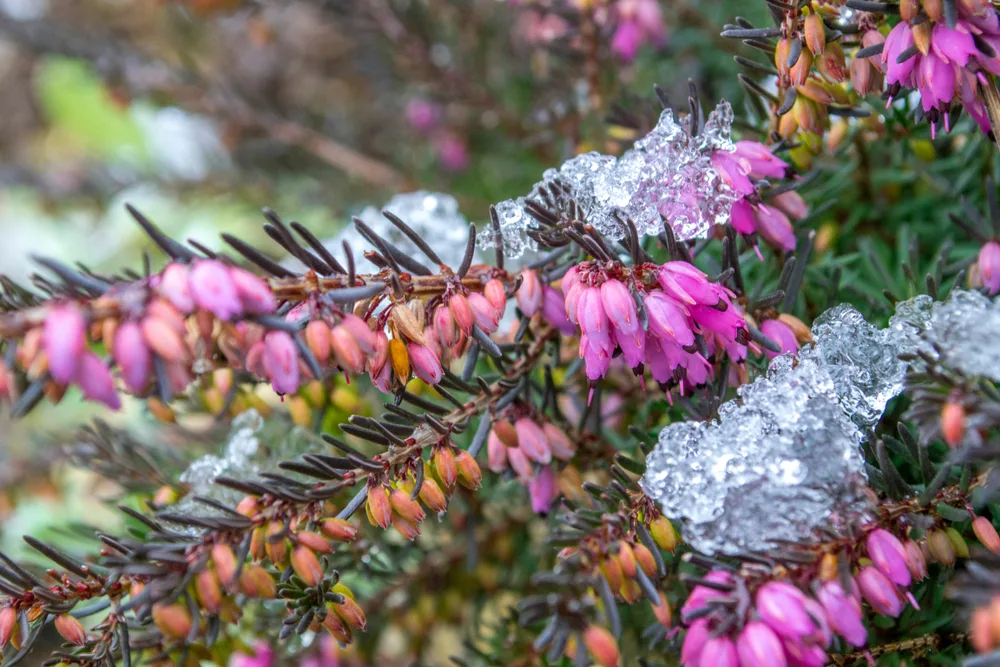
Winter heath is a low-growing shrub with needle-like, evergreen leaves that creep along the surface like a ground cover.
In mid-winter, it positively explodes with color. Sending out throngs of urn-shaped flowers that run along a one-sided raceme, winter heath becomes a sea of bright pink.
Blooming when covered by snow, winter heath will certainly brighten up the dullest of landscapes.
Bloom time: January to March
Hardiness zone: 5 to 7
Sun exposure: Full sun to part shade
2. Witch Hazel (Hamamelis × intermedia ‘Arnold Promise’)
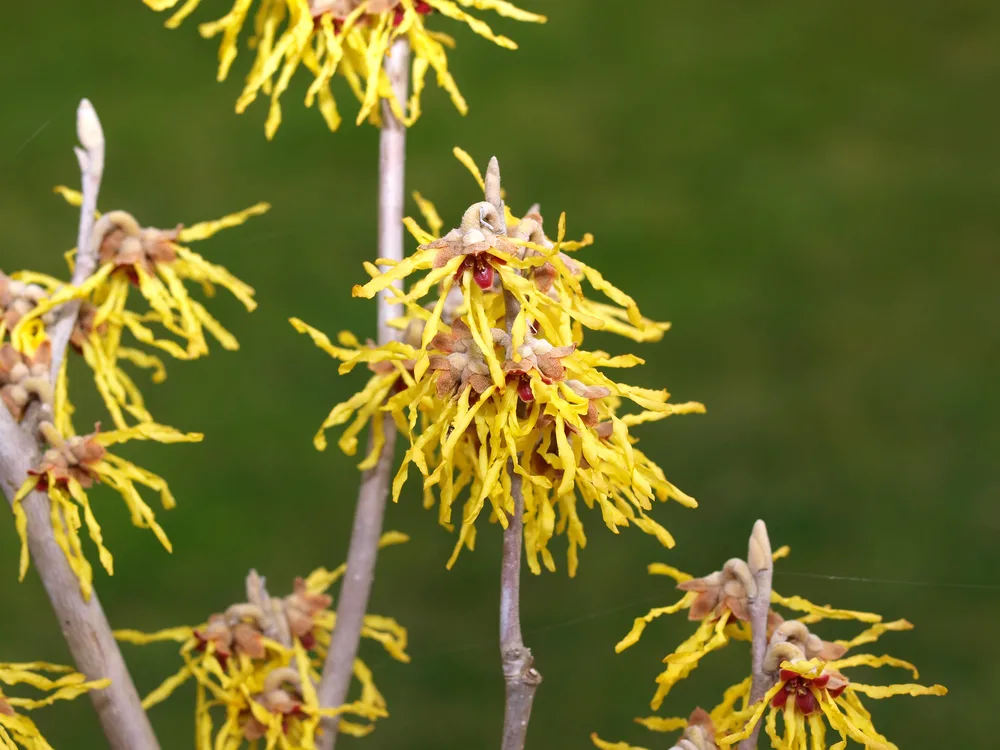
Witch hazel is a large, upright, deciduous shrub with a spreading habit. It bears broad oval green leaves in spring and summer. In fall, leaves turn vibrant shades of red and yellow.
Once the leaves drop in winter, witch hazel puts on a dazzling show until March. It blooms profusely with fragrant and unusual flowers along leafless branches. Each flower consists of four ribbon-like and crinkly petals that add a healthy dose of color to the landscape.
‘Arnold Promise’ is one of dozens of varieties that bears yellow flowers. Other color choices include ‘Livia’ for ruby red flowers and ‘Jelena’ for orange blooms.
Bloom time: January to March
Hardiness zone: 5 to 8
Sun exposure: Full sun to part shade
3. Wintersweet (Chimonanthus praecox)
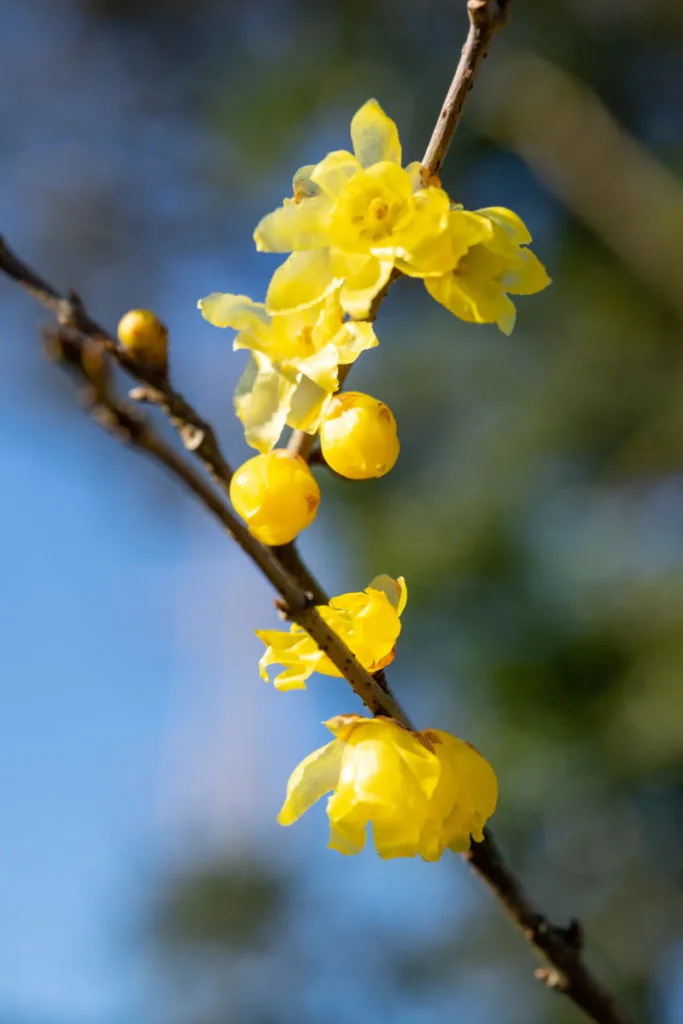
Wintersweet is another winter-blooming deciduous shrub that produces sweet smelling flowers on naked branches.
These flowers are quite beautiful too, with showy, pale yellow tepals with a purplish center, each 1 inch across.
In southern parts of its range, blooming time spans December to January while more northern regions will see flowers from February to March.
Glossy green oval leaves emerge in spring after flowers have bloomed. In autumn, leaves turn an attractive yellow hue.
Bloom time: December to March
Hardiness zone: 7 to 9
Sun exposure: Full sun to part shade
4. Christmas Rose (Helleborus niger)
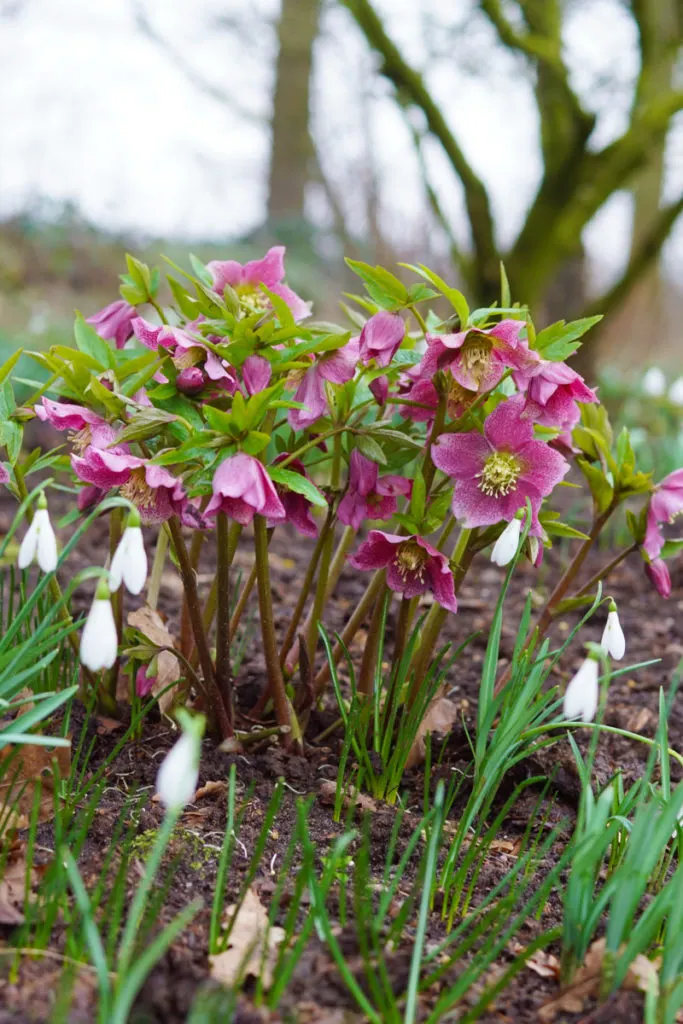
Christmas rose is a gorgeous winter-blooming specimen.
Forming clumps of evergreen basal leaves, it bears bright white five-petaled flowers with a dense cluster of yellow stamens in the center. Its white petals will fade to a dusty pink as the season wears on.
So named because it first appears in late December in warmer winters of the south, Christmas rose takes a little longer to pop up in northern parts of its range.
Flowers can bloom in snowy conditions and survive when the temperature dips below zero.
Bloom time: December to March
Hardiness zone: 3 to 8
Sun exposure: Part shade to full shade
5. Snowdrop (Galanthus spp.)
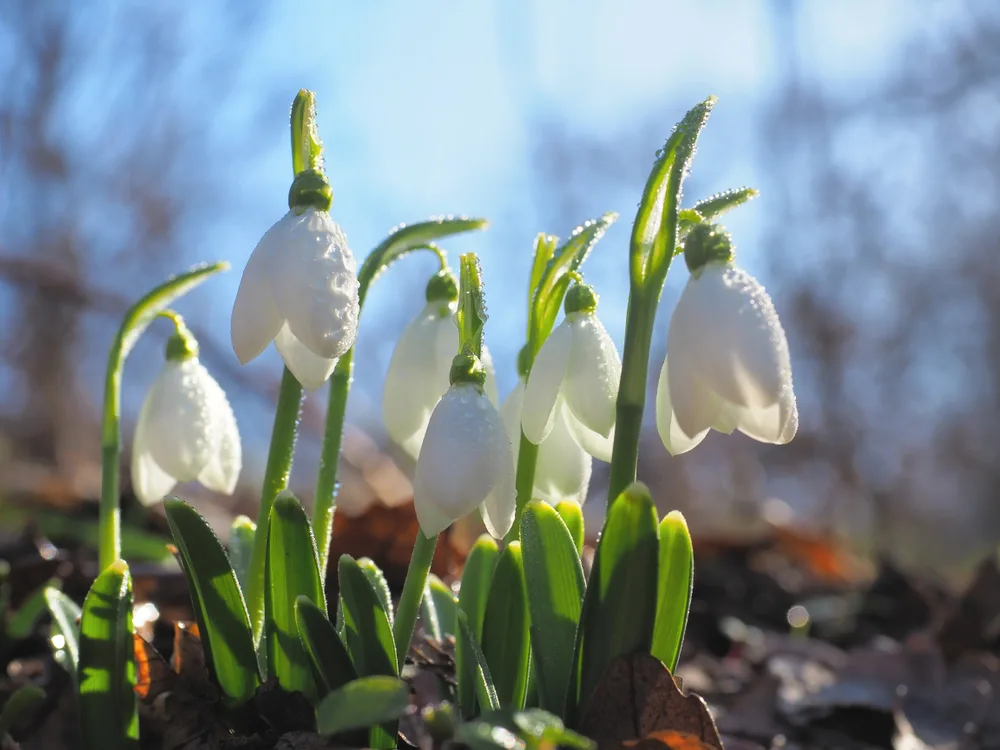
Snowdrop is one of the earliest blooming flowering bulbs, sending out its dainty flowers in mid-winter, even in snow-covered landscapes.
For several weeks, snowdrop blooms rise above a bed of grey-green, strap-like leaves. These emerge as bright white, downward facing flowers that have a gentle fragrance.
Bloom time: February
Hardiness zone: 3 to 7
Sun exposure: Full sun to part shade
6. Snow Crocus (Crocus chrysanthus)

Snow crocus is among the early risers, sending out its hardy little flowers in icy conditions.
Like other crocus types, snow crocus has upright, bowl-shaped blooms with a deep throat, surrounded by grassy foliage.
Snow crocus has yellow-orange petals and emit a sweet honey scent. Other cultivars and hybrids offer different shades of lavender, white, cream, bronze, and blue.
Bloom time: February to March
Hardiness zone: 3 to 8
Sun exposure: Full sun to part shade
7. Persian Violet (Cyclamen coum)
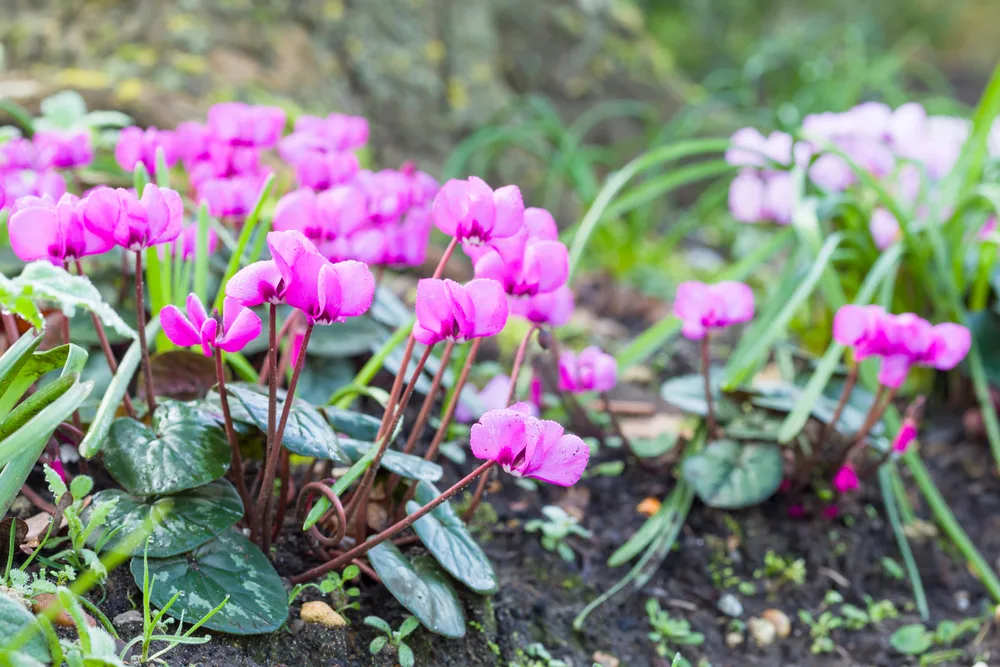
Persian violet is a low growing tuberous perennial that loves the shade.
Blooming from late winter to early spring, Persian violet features rounded, heart-shaped leaves in green with silvery grey mottling.
Its flowers emerge singly on stalks 6 inches high. The blooms have reflexed and winged petals in varying shades of white, light pink, magenta, and lavender.
Bloom time: February to April
Hardiness zone: 5 to 9
Sun exposure: Part shade
8. Winter Aconite (Eranthis hyemalis)
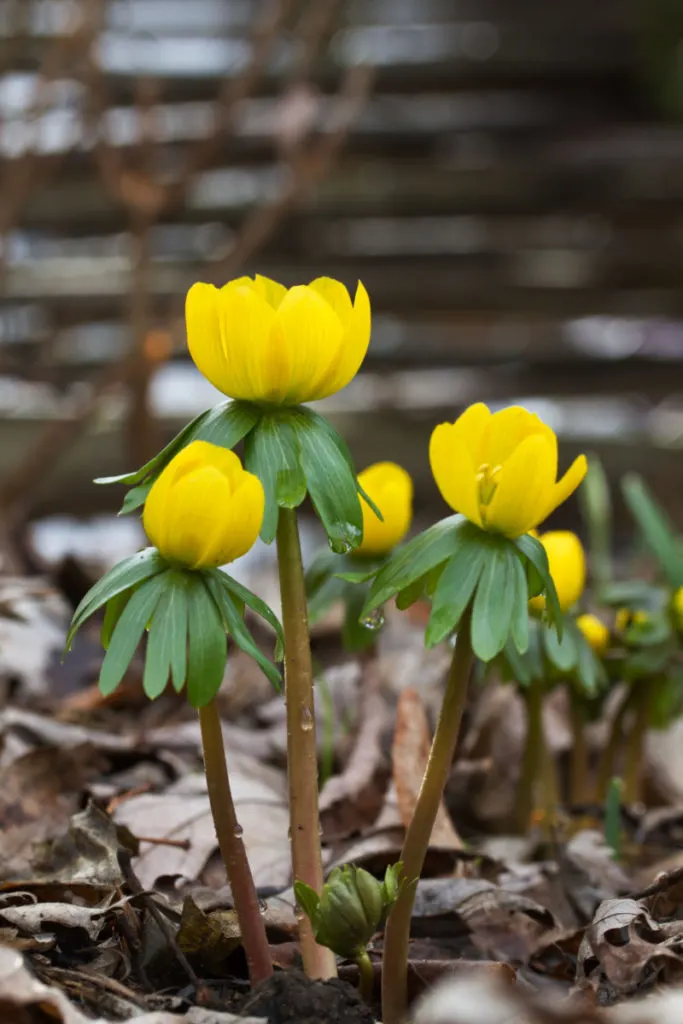
Winter aconite is about as adorable as can be.
A perennial tuber in the buttercup family, winter aconite is a low grower that rises to just four inches off the ground. It has bright yellow, cup-shaped flowers that face the sky. These are surrounded by a charming collar of leafy bracts.
Emerging through the snow in late winter, winter aconite will remain in bloom until spring.
Bloom time: March to April
Hardiness zone: 3 to 7
Sun exposure: Full sun to part shade
9. Arrowwood Dawn (Viburnum × bodnantense ‘Dawn’)
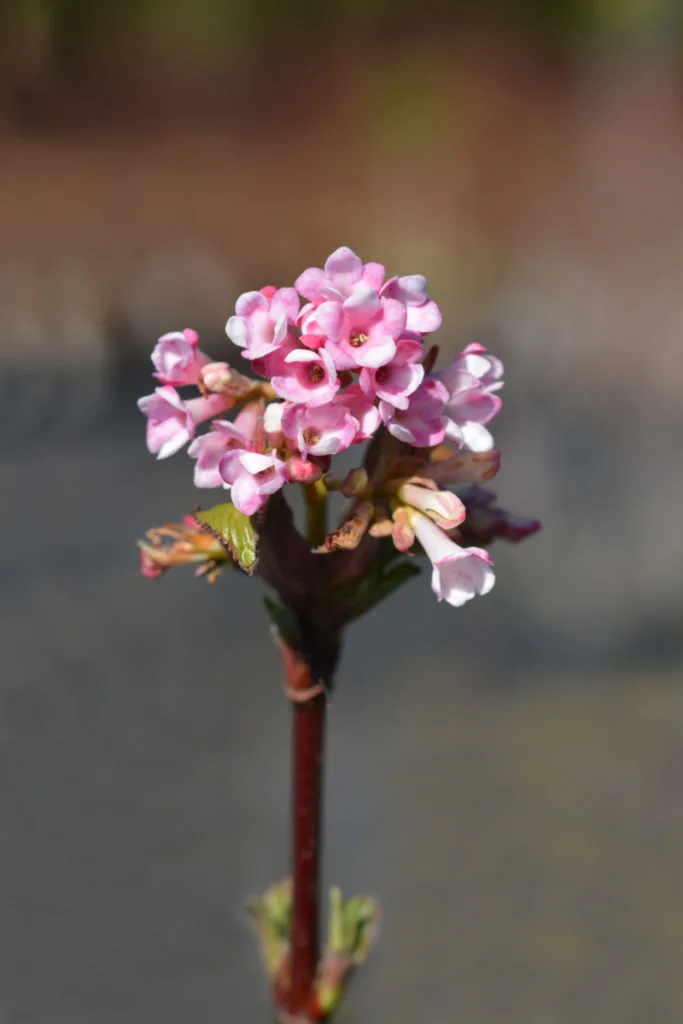
Adding a splash of rosy-pink color to the landscape, arrowwood dawn is an upright, multi-stemmed shrub much loved for its intensely fragrant blooms in winter.
These emerge from pink buds along leafless branches, developing into marvellous clusters of tubular pink flowers. Blooms fill the air with a sweet aroma.
In warm winter climates, arrowhead dawn provides this show from late autumn to early spring. More northern parts can enjoy the blooms in late winter.
Bloom time: March to April
Hardiness zone: 5 to 7
Sun exposure: Full sun to part shade
10. Winter Jasmine (Jasminum nudiflorum)
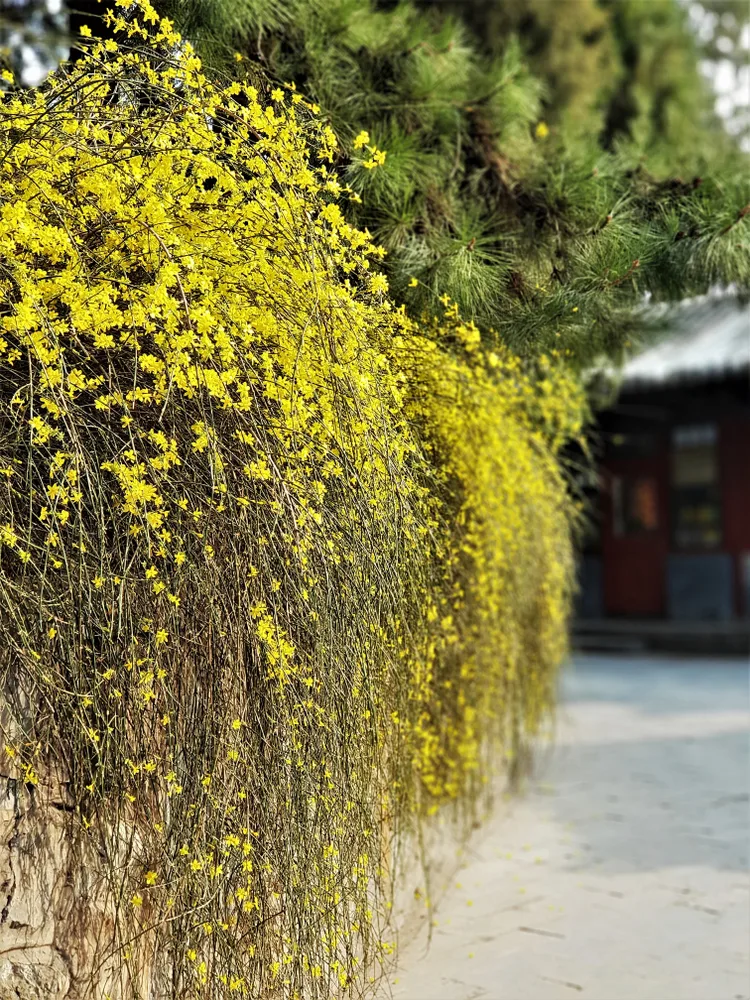
Winter jasmine is an interesting cultivar that can be grown as a vine or shrub.
It starts as a small mound with trailing branches that can be trained to grow up vertical structures or left to sprawl along the ground.
Aside from its versatile habit, winter jasmine blooms before leaves appear in spring. Masses of cheery, bright yellow flowers pop up along the trailing vines in late winter.
Bloom time: March to April
Hardiness zone: 6 to 10
Sun exposure: Full sun to part shade
11. Glory of the Snow (Chionodoxa forbesii)
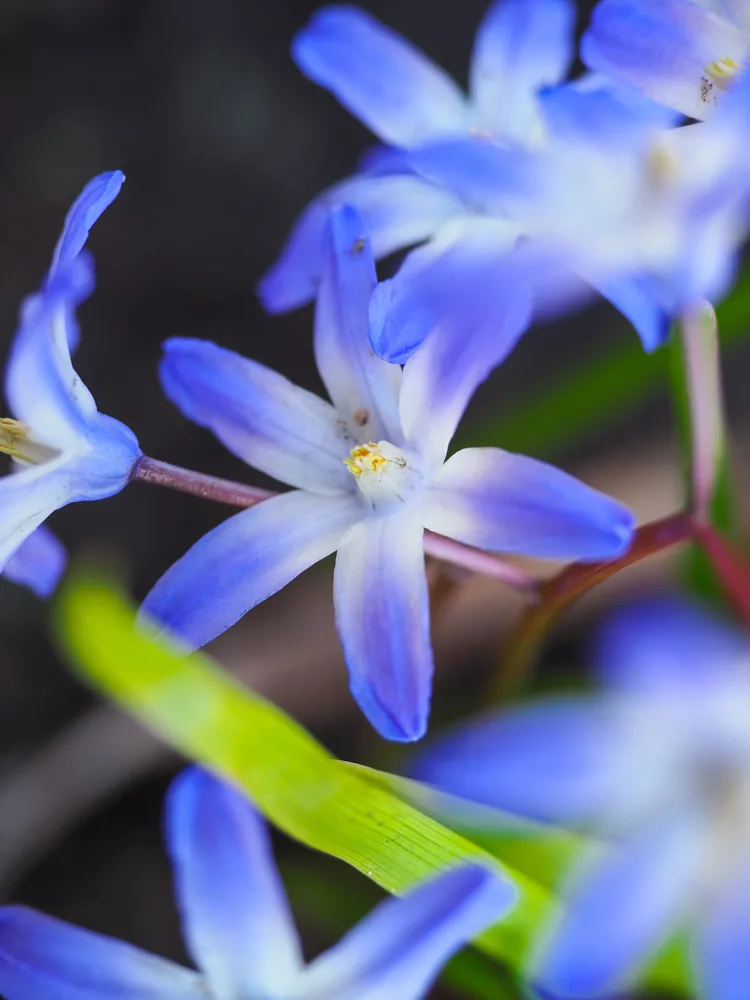
The star-shaped flowers of glory of the snow are a happy sight to behold as they poke their head up from beneath a blanket of snow.
Available in blue, pink, and violet hues, glory of the snow rises up on 12-inch stems.
Each bulb bears racemes consisting of anywhere from four to ten flowers. The flower stalk is accompanied by attractive green semi-erect basal leaves.
Bloom time: March to April
Hardiness zone: 3 to 8
Sun exposure: Full sun to part shade
12. Pussy Willow (Salix discolor)
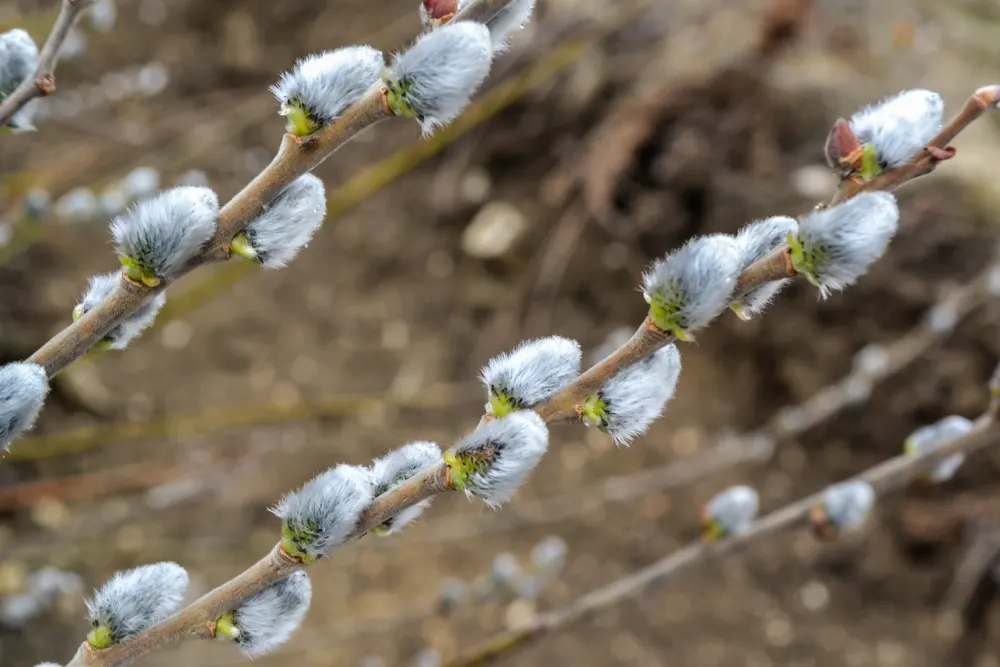
Pussy willow is a large, multi-stemmed shrub with broad elliptical leaves, bright green on the topside and a downy grey on the underside.
This is a dioecious species with separate male and female plants.
It is the male plants that produce the ornamental blooms pussy willow is known for – cottony, silky, pearl grey catkins, an inch or more in length. These emerge in late winter on bare reddish stems. By contrast, female pussy willow catkins are smaller and have green stamens.
Because pussy willow blooms in late winter, it is an excellent early source of nectar and pollen for bees, insects, and birds.
Bloom time: March to April
Hardiness zone: 4 to 8
Sun exposure: Full sun to part shade
13. Winterberry (Ilex verticillata)
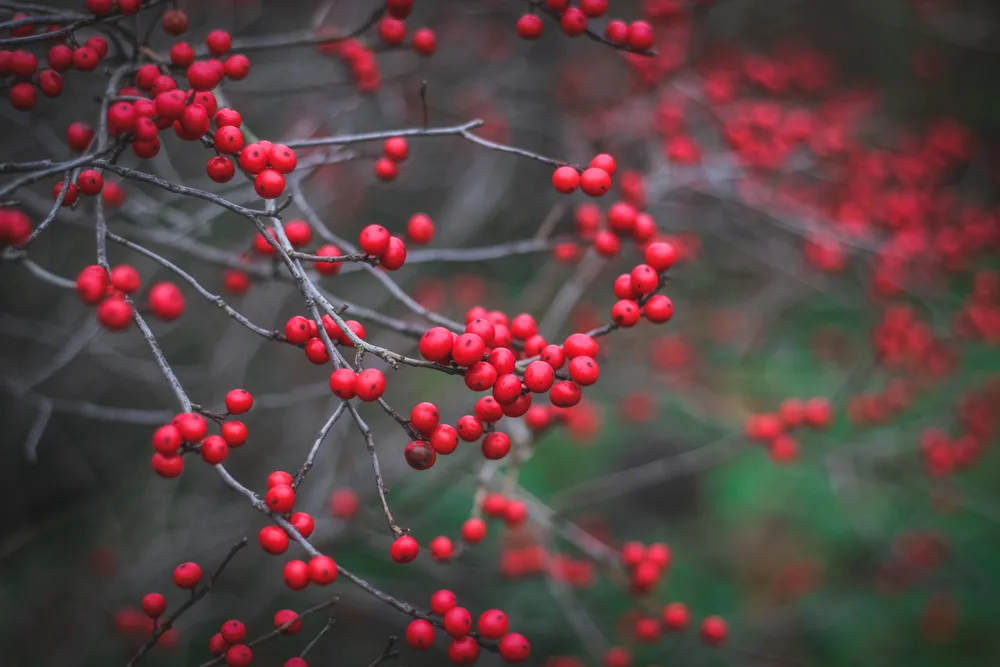
Winterberry is a slow growing deciduous shrub with an upright, rounded habit that typically grows 6 to 10 feet tall and wide.
Although it blooms in spring with inconspicuous greenish-white flowers, these eventually give way to a massive crop of vibrant red berries in autumn. These persist on naked branches through winter, unless devoured by local birds.
Like pussy willow, winterberry is dioecious. Female plants will produce heaps of berries when pollinated by a male plant. To ensure consistent berry production, plant one male winterberry per 6 to 10 female plants.
Hardiness zone: 3 to 9
Sun exposure: Full sun to part shade
14. Ornamental Cabbage (Brassica oleracea)
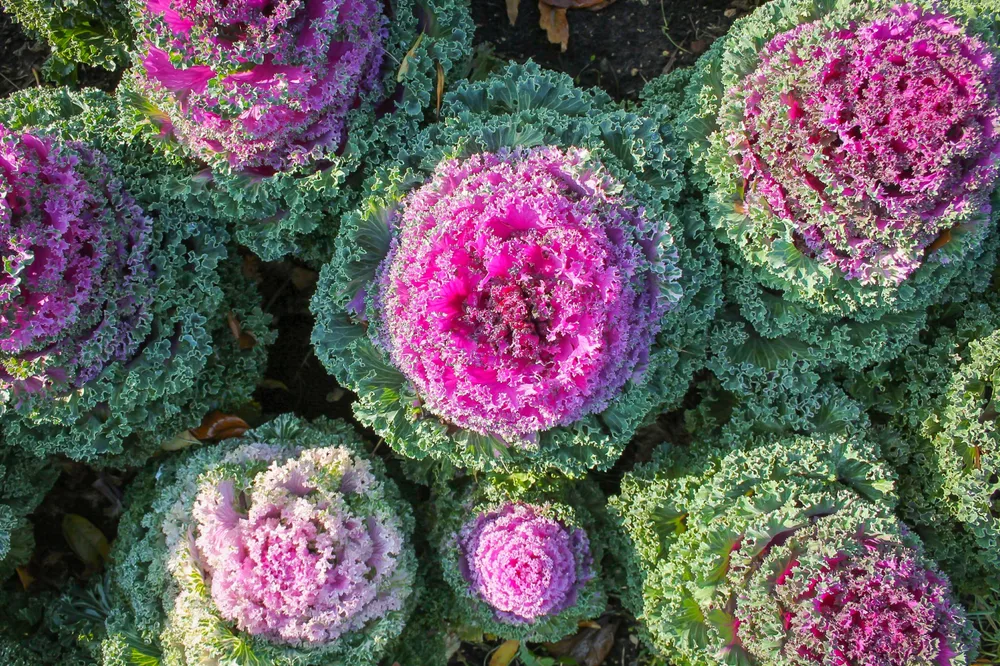
Bred for beauty (and not so much for flavor) ornamental cabbage is all about creating stunning foliage color in the winter landscape.
Ornamental cabbage forms attractive heads that resemble enormous flowers. The leaves are ruffled and arranged around a tight rosette that continues to grow and unfurl to about a foot tall and wide.
Starting out with green leaves, ornamental cabbage requires cool temperatures to show off its amazing, kaleidoscopic colors. These range in whites, creams, pinks, reds, purples, and many hues in between.
The color of ornamental cabbage intensifies in 50°F (10°C) and below. Plant these out in window boxes and porch containers in autumn to fully appreciate the changing colors as temperatures drop.
In colder climates, it will die back when temperatures dip below 5°F (-15°C). In warmer winter areas, it will continue to grow through spring and summer until it bolts in hot weather temperatures above 80°F (26°C).
Hardiness zone: Annual
Sun exposure: Full sun
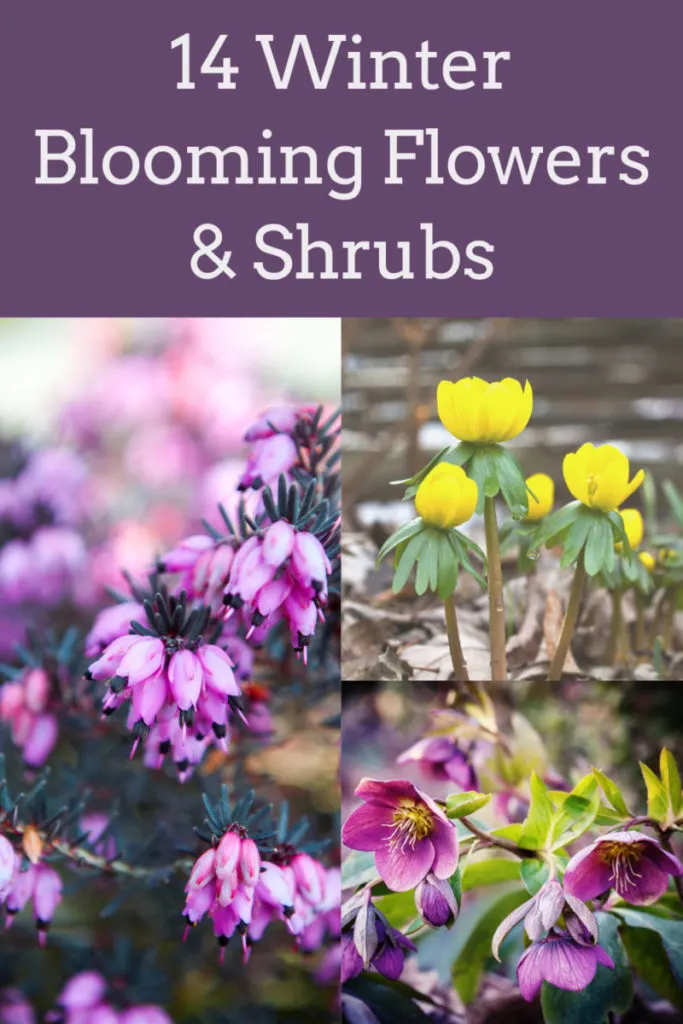
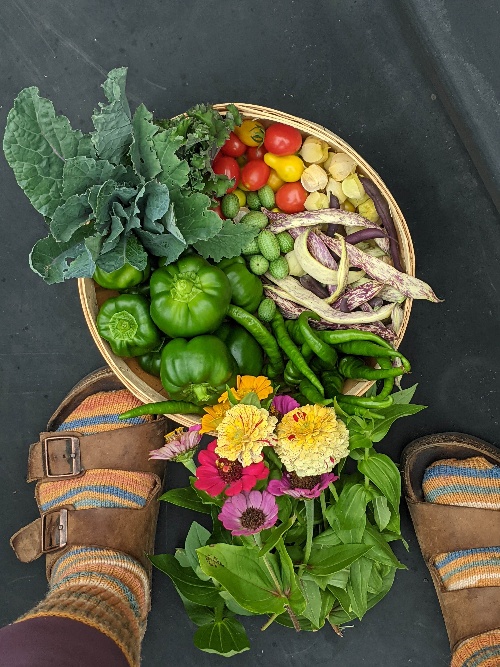
Get the famous Rural Sprout newsletter delivered to your inbox.
Including Sunday ramblings from our editor, Tracey, as well as “What’s Up Wednesday” our roundup of what’s in season and new article updates and alerts.


